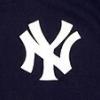-
Posts
21504 -
Joined
-
Days Won
82
Content Type
Profiles
Forums
Downloads
Everything posted by Yankee4Life
-
Let me fill you in on something. Homer has been making cyberfaces for years now and his work can be found in many total conversion mods on this website. He has literally made hundreds of cyberfaces for Mvp and to be honest this is the first negative remark I've read about his work. Homer's work with cyberfaces is just as good as yours if not better.
-
I understand. I just flashed back to when the 08 mod was being made and the huge amount of people that would post daily because that mod wasn't out as fast as they wanted it. Some of them would be pretty upset because the mod was not out when they wanted it to be.
-
I understand that and I hope that happens. But these impatient people in here have always driven me nuts. That's why Total Classics mods are not announced and talked about. They just appear when they are completed.
-
That really should be the last update that you give these people kyleb. Of all the things that Krawhitham hated to deal with when the 06,07 and 08 mods were coming out were questions like this asking when it is going to be released. "When it is out, it is out!" should be good enough for ANYONE from here on out. But just watch...they'll keep asking and asking.
-
When it is done it will be done.
-
If you don't see it in the overlays section for Mvp Baseball that means it is not there.
-
Let's face facts for a second here. There are people out there who will do nothing but complain about what this person and that person has said only because it gives them the spotlight for a little while.
-
Yes, I see what you mean. You can't go into work and go up to your boss and start calling him every name in the book for a minute or two and then try to say it is your freedom of speech to do that. But then again, this wasn't like this. I don't believe Ozzie Guillen was consciously trying to insult or upset anyone. I think maybe what he said was something that made sense in his head and it just came out wrong. But it just gets back to what I was saying. Guillen said something. In the whole grand scheme of things that go on in our lives, this is something that we do not need to worry ourselves over at all. I never knew this happened.
-
That's all it is Dennis. I think if people took a breath and realized that this thing they are getting all worked up about is coming from a baseball manager they would realize how silly it is to worry about what was said. This guy is not some politician who is going to be voting against a bill that would in turn directly affect you or your family and he is not a CEO of a company who is threatening to close down a factory in your town that would cost 50,000 jobs. He's just a baseball manager who said something dumb. Maybe so, maybe so. Since I am not Cuban and do not live in the Miami area I have no idea how those people there are reacting to this but it is safe to say that the mention of Castro's name would make most of them upset. Had I been Cuban my first reaction would be "what is Guillen talking about and what does he mean?" I'd want to find this out before condemning him. And with you using the analogy of Girardi talking about Bin Laden made sense. And if that ever happened, Joe Girardi would have to explain himself 100 times more than Guillen is now. Well, I see what you mean. But anyone in the public eye has a lot less freedom of opinion as compared to people like you and I. I did not read this article because you have to be a paying member of Time magazine online to read this and I am not about to do that but I have the feeling Guillen said this remark in passing or maybe it was an off the cuff remark. Because I don't believe anyone would say this on purpose knowing how people are these days with the way everyone analyzing everything people say. Oh hell yeah. Writers in every city are going to ask him about it all year long.
-
And Dylan was right. This is the only way right now that you are going to get this utility unless tywiggins himself comes back to the website and decides to re-upload his stuff again. If and when that happens is anyone's guess but at least you know where to get this utility if you need it. And also like Dylan said he can not upload this utility because he does not (along with everyone else) have the right to do it. There's a good chance he has this somewhere at home not attached to the '94 mod like I do but we can't upload it. Modders rights come first here.
-
1994 crap?? What the *&^% is the matter with you? The guy that made that 1994 mod has done more for this website then you can ever hope to and you refer to it as "1994 crap" ? On second thought, you know what? This is none of my business. Keep on going around here calling things crap just because you aren't getting what you want. See how fast people fall over themselves trying to help you out.
-
First off, let me get the links to this news story out of the way. From ESPN: Right here. From the Miami Herald: Right here. Finally, from MLB.com: Right here. In a recent article in Time Magazine, Miami Marlins manager is quoted as saying that he "loves" Fidel Castro, the dictator who has ruled the island of Cuba since 1959. Obviously this has made a lot of people upset, especially if you are of Cuban decent because for generations this man has literally told the Cubans what to do, where to go, when to do it, etc. But for some reason Ozzie Guillen said he loved him. And now, because people did not like what he said, the Marlins were pressured to suspend him from his duties as manager of the team for the next five games. Personally I think it is a publicity ploy to appease the people that are upset about this and they did it just to show them they understand why they are upset and that they didn't like what Guillen said either. For me, that was the wrong way to handle it. If I were the Marlins I would have said something like this: While we do not agree or condone what Ozzie Guillen said about Fidel Castro of Cuba, Mr. Guillen's views and quotes are strictly his and his alone and do not represent the views and opinions of this ballclub, etc, etc, etc What exactly happened here??? 1. A manager of a baseball team gave an interview. The manager happened to be Ozzie Guillen, a man who in the past has said many controversial things and has had to apologize his way out of those. This won't be the last time he says something people won't like. Consider the source here people. 2. After reading the quote in question by Guillen I did a quick walk around my house. The TV did not explode. The dogs did not run away. The washer and dryer are still working fine. The siding did not fall off the house and the car is still running fine. What Ozzie Guillen says is not going to affect my life in any way. 3. I went to a Latino restaurant on Monday night. There were no Ozzie Guillen dartboards hung up there. The Latin customers at the other tables were not all huddled together cursing out Guillen or yelling out his name. The employees reported that no fights broke out at the mention of Ozzie Guillen's name. In fact, his name was not brought up. Their lives went on even after this interview by Guillen. Before I end this let me clear a few things up. I am not a fan of Ozzie Guillen. I didn't care about him when he was a player or the manager of the White Sox and certainly not now. I don't pay attention to this guy. I don't log on to the net every day and before I leave I have to check on the latest news about Guillen. What I DO SUPPORT about this guy is his right to say his opinion, despite if I agree with it or not. I look at it this way. Ozzie Guillen doesn't give a **** about what I think and the feeling is mutual. No one, Latino or not, should be so concerned with what this guy says. He's just a manager of a National League Baseball team. That's it. Just once I would like to see someone, whether they are in the world of sports, the entertainment business or in politics after they said something that people get upset over do not go backpedalling as fast as they can to deny or say they were misinterpreted, as Guillen said here. Let him talk. He won't hurt you. I promise. And you have the right to ignore him if you want. Use that right if you see fit. Done.
-
-
Fortunately I was able to read your original post before you deleted it. My first advice to you is if you have that post saved is to re-post it. Someone will just move this topic to the right forum for you. Based on what I read you are doing nothing wrong and it just sounds to me that this is strictly a compatibility issue with Vista and when that happens you really don't have a lot of options, as you found out yourself. Maybe connecting with FTP like you said is the wisest -and safest- way for you to go with this because as you said you didn't want to mess around with Vista and your system too much. And I understand you not wanting to spend that much on the PC version because there are some people out there asking for crazy prices for the PC game. Did you know there's some nut trying to sell a new version of Mvp 05 on Amazon for $240? Makes that $45 asking price seem a lot more reasonable. But if you prefer playing on the original Xbox, that's fine. That's what you are comfortable with. Good luck in solving your problem.
-
I also run TiT in Windows 7 and have been doing it for quite some time with no problems at all and what kjuggs described in his post is how to do it.
-
You are very welcome Dylan. I hope you had a good Easter and have a good week.
-
No.
-
Pardon me, and I realize this should not concern me but you have been on this website long enough to know that this man has made schedules for this game for years now among many other things geared for quality dynasty play in Mvp. Just a quick look around in the download section and you would have found this mod all by yourself.
-

Random Thoughts On A Sunday Morning Updated To 11-23
Yankee4Life replied to Yankee4Life's topic in Left Field (Off-Topic)
Updated to 4-8 ...Cleveland's Ubaldo Jimenez is appealing his five game suspension for hitting former teammate Troy Tulowitzki with a pitch. Personally I think it's a good move on his part because with all the yelling that the Rockies caused because of this incident Jimenez was guilty even before he went off the mound to defend himself. ...This was the first week of baseball but already ESPN was talking about October predictions. I know every year they do the same thing but it really is annoying. I want to enjoy the return of baseball right now and not think about the end of the season. That comes fast enough all by itself. ...With David Robertson injuring his foot going down stairs, Joba Chamberlain hurting his ankle on a trampoline of all things, Michael Pineda starting the season on the DL because of tendinitis in his right shoulder and many other various injuries that the Yankees had this spring, it leaves me very little room for sympathy for the Red Sox for losing Andrew Bailey for three months. ...On the other hand even if none of this stuff would have happened to the Yankees, Andrew Bailey still would be the last thing on my mind. I liked him when he was in Oakland but now? No. ...Levi Johnston is going to be a father again at the age of 21. You can say one thing about this guy, he knows how to get around. ...I recently re-installed an old soccer game I have called Pro Evolution Soccer 4 and I am still blown away by the graphics and gameplay that Konami put into it and all the time I was playing this I could not help thinking what this company could do if they were allowed to make a baseball game. ...The more I mess around with my XP laptop that I have the more I realize I how much I miss Windows XP because that operating system was much more stable than Vista or Windows 7. ...Amazon must love me since I bought eight games in a span of three days. ...I had to laugh when I read about the dog who ate his owner's tickets to the Masters Golf Tournament. The poor guy had to induce vomiting to get the tickets back and then take photos of them to prove he did have them. Fortunately the people that run the Masters were very understanding and everything turned out well for him. I just hope the dog doesn't get it into her head to eat the guy's refund check next. ...The Cubs may be the Cubs but they know how to get the right guy to throw out the first pitch for their home opener when they picked Bill Murray. ...Somehow I think the New York Mets are going to survive very well without Jose Reyes. ...When I first read that Ozzie Guillen "loves Castro" I thought he meant Starlin Castro of the Cubs and not Fidel. And typical of anyone these days who says something and immediately regrets saying it, Guillen called a quick press conference to explain to all concerned that he didn't mean what he said and he's sorry. Ok, but why say it in the first place? ...Meanwhile, up at the Southside of Chicago they're all smiles because they know Guillen's not their problem anymore. ...If you ever wondered how you can get yourself into 6.7 million dollars of debt, ask Warren Sapp. He knows. ...The next movie I plan on seeing is American Reunion which could be the last installment of the American Pie movies. I saw a few previews of it and it looks pretty good. The first thing I'm going to look for when I go and see this is how much makeup they had to plaster on Tara Reid to make her look good for this. Stifler's Mom looks better than her. ...Amanda Bynes is the latest no talent actress to be arrested for DUI. She must have been tired of Lindsay Lohan getting all that attention. ...Charles Manson said that next week he may not even attend his latest parole hearing, probably because he's been denied so many times in the past. Makes sense. That guy has as much chance making parole as Bin Laden has getting a posthumous pardon from the United States. ...There's a kid in China who last year sold his kidney to buy an iPad2 and an iPhone and because of that, is now suffering from renal deficiency, which, according to that article is a very serious medical condition. How someone can willingly do this is beyond any understanding that I have and it isn't my objective here to make light of this, but if anyone ever tells you from now on that something that you have done is really stupid all you got to do is tell them is wait a second..I got a story to tell you about some Chinese kid. ...This week on April 12th marks the 100th anniversary of the Titanic sinking. It's such a fascinating and tragic story. All those lives lost and all those lives that could have been saved. But leave it up to someone with an eye to his wallet to come up with this gimmick as they plan on setting sail and following the exact course of the doomed ship exactly 100 years later. If it were me, because I like to play it safe, I'd triple check if they had enough life jackets and rescue boats just in case there's some icebergs in the neighborhood looking for a fight. ...I don't know how true this is but I read last week that Russia is developing a gun that turns people into zombies by attacking the target's central nervous system. These guys will do anything to win at the Olympics, won't they? ...Tim Tebow will be giving a speech today in celebration of Easter Sunday at a church in central Texas. I don't know exactly what he's going to be talking about but it's sure to be long and half the people will be nodding off before he's through. ...By the way, Happy Easter Sunday to everyone here at Mvpmods! -
-
The Seattle ones and the White Sox one look great.
-
No, not really. If there is a Best Buy in your area try to get a CD cleaning kit there or places like Target or Staples will have them too. Edit: I forgot to say, give this a shot first. The best that can happen is that is fixes the problem and you don't have to fork over money for this game. But at least you'll have a CD cleaner for your other discs.
-

Dylan's MVP Baseball 2005 Schedule Generator
Yankee4Life commented on DylanBradbury's file in Tools and Editors


